Kazan, the capital of the Republic of Tatarstan, is a unique Russian city where historical texture, cultural richness, and modern life intertwine. Located on the banks of the Volga River, this impressive city presents centuries-old Tatar and Russian heritage together, allowing visitors to feel both Eastern and Western cultures. From the Kazan Kremlin, which is on the UNESCO World Heritage List, to the colorful Bauman Street, from the Old Tatar Settlement adorned with cottages to the magnificent Kul Sharif Mosque, every corner is filled with history and aesthetics.
Kazan offers an unforgettable route for travelers of all ages not only with its architecture but also with its museums, natural beauty, and vibrant social life. Whether you are in search of a cultural discovery or wish to spend time in nature, there is surely a stop in Kazan that will interest everyone. In this article, we have compiled the 30 most popular places worth visiting in Kazan. If you’re ready, let’s begin exploring this enchanting city step by step!
1. Kazan Kremlin – The historical center of the city, listed as a UNESCO World Heritage Site.

Kazan Kremlin is a fascinating historical architectural complex located in the heart of Kazan, the capital of Tatarstan, and is listed as a UNESCO World Heritage Site. Founded in the 10th century by the Volga Bulgars, this area has been shaped over time under the influence of both Tatar and Russian cultures. After the Khanate of Kazan was conquered by Russian Tsar Ivan IV in the 16th century, the Kremlin was rebuilt and largely gained its present appearance during that period. Hosting many architectural elements such as mosques, churches, palaces, and towers, this area bears the traces of the past both religiously and administratively.
One of the most striking structures in the complex is the Kul Sharif Mosque, which has become a symbol of Kazan. In addition, significant buildings such as the Söyembikä Tower, the Archdiocese Orthodox Cathedral, the Governor’s Palace, and the Kazan Archaeological Museum are also located within the Kremlin’s boundaries. Serving as a unique open-air museum for history enthusiasts, the Kazan Kremlin offers visitors an impressive journey from past to present with its architectural and cultural richness. For this reason, it is one of the main stops that everyone visiting the city should definitely see.
2. Kul Sharif Mosque – One of the largest mosques in Europe, located within the Kazan Kremlin.

The Kul Sharif Mosque is a magnificent structure located within the boundaries of the Kazan Kremlin and is considered one of the most important religious and cultural symbols of Tatarstan. It is named after Kul Sharif, the last chief imam of the Khanate of Kazan in the 16th century, who was martyred during the Russian conquest of Kazan. The original mosque, which was destroyed in 1552, was rebuilt in 2005 in honor of the 1000th anniversary of the founding of the Republic of Tatarstan. Constructed using modern techniques while remaining faithful to traditional architecture, the mosque captivates visitors with its elegant aesthetic, featuring white marble and blue domes.
As one of the largest mosques in Europe, Kul Sharif serves not only as a place of worship but also as a venue for cultural events and tourist visits. Inside the mosque, there is a museum dedicated to Islamic culture, areas displaying religious books, and a prayer hall adorned with stunning stained-glass windows. Illuminated by special lighting at night, the structure has become an essential part of Kazan’s skyline and a peaceful symbol reflecting the city’s Tatar and Russian heritage.
3. Söyembikä Tower – A leaning tower shrouded in legend.

The Söyembikä Tower is a historic structure located within the Kazan Kremlin and is considered one of Kazan’s most mysterious buildings due to both its architecture and the legends surrounding it. Thought to have been built in the 17th or 18th century, this brick tower stands approximately 58 meters tall and is notable for its visibly leaning structure. It is one of the most well-known “leaning towers” in Russia and is often referred to as the “Russian Tower of Pisa” due to its slight tilt over time. Although the exact date and purpose of its construction remain uncertain, it is believed to have served as a military watchtower or clock tower.
What makes this historic structure especially captivating is the poignant legend surrounding the Tatar princess it is named after—Söyembikä. According to the tale, after Tsar Ivan IV conquered the Khanate of Kazan, he wished to marry Söyembikä. The princess, unwilling to accept the marriage, set a condition for the construction of a seven-story tower. Once the tower was completed, she is said to have thrown herself from its top, ending her life. Although the authenticity of the story is debated, the legend has imbued the tower with emotional significance and made Söyembikä a symbolic figure for the Tatar people. Today, the Söyembikä Tower is one of the most iconic structures representing Kazan’s historical and cultural identity.
4. Bauman Street – The city’s most vibrant shopping and pedestrian street.

Bauman Street is a historic pedestrian avenue located in the heart of Kazan and is known as one of the city’s liveliest spots. Existing since the 15th century, this street has gradually become the center of Kazan’s shopping, culture, and social life. Surrounded by cobblestone paths, colorful street performers, boutique shops, cafes, and restaurants, Bauman Street is a popular destination for both locals and tourists. As you walk along the street, you can feel the coexistence of past and present.
Landmarks such as the Clock Tower, Epiphany Cathedral, the Fyodor Chaliapin Monument, and many street sculptures offer visitors a rich visual and cultural experience. Especially in the evening, Bauman Street transforms into a magical atmosphere with its lighting, street musicians’ performances, and events held throughout the year, turning it into a vibrant open-air stage. This street, where everyone visiting Kazan should spend at least a few hours, is one of the most enjoyable ways to feel the spirit of the city.
5. Saints Peter and Paul Cathedral – An Orthodox cathedral known for its striking Baroque architecture.

Saints Peter and Paul Cathedral is one of Kazan’s most impressive religious buildings, showcasing the grandeur of Baroque architecture. Built in 1726, this Orthodox cathedral was constructed in honor of Russian Tsar Peter I’s visit to Kazan, which is why it was named “Saints Peter and Paul.” The exterior is adorned with ornate stone carvings, colorful stucco, and elegant columns, reflecting the era’s sense of refinement. The interior, especially notable for its blue-toned tiles and gilded icons, offers a visual feast for visitors interested in architecture and religious art.
One of the cathedral’s most striking features is its bell tower, which rises over 25 meters high. This tower, a prominent part of Kazan’s skyline, along with the cathedral’s rich decorations, makes the building not only a place of worship but also an artistic masterpiece. Still actively used today, the cathedral serves as a significant center for the Orthodox community in Kazan and stands out as a must-visit historical and cultural landmark for tourists.
6. Agricultural Palace – A state building noted for its magnificent architecture.

The Agricultural Palace is an impressive government building located on the banks of the Volga River, directly opposite the Kazan Kremlin, and captivates onlookers with its architecture. Completed in 2010, this structure houses the Ministry of Agriculture and Food of the Republic of Tatarstan. Built in a neoclassical style, the building’s most striking feature is its massive arched entrance with a large bronze tree sculpture at its center. This tree figure symbolizes agriculture and the connection to nature, giving the building a distinctive and iconic character.
While the Agricultural Palace draws attention with its architectural details during the day, it transforms into a completely different spectacle at night with its special lighting. It has become one of modern Kazan’s landmarks and is a favorite photo spot, especially during evening strolls. Although access to the interior is generally limited to guided tours, the exterior and its well-maintained landscaped surroundings still attract many visitors. With its elegant design combining classical and contemporary elements, the Agricultural Palace reflects Kazan’s architectural richness.
7. Museum of Soviet Life – A nostalgic museum displaying items from the Soviet era.
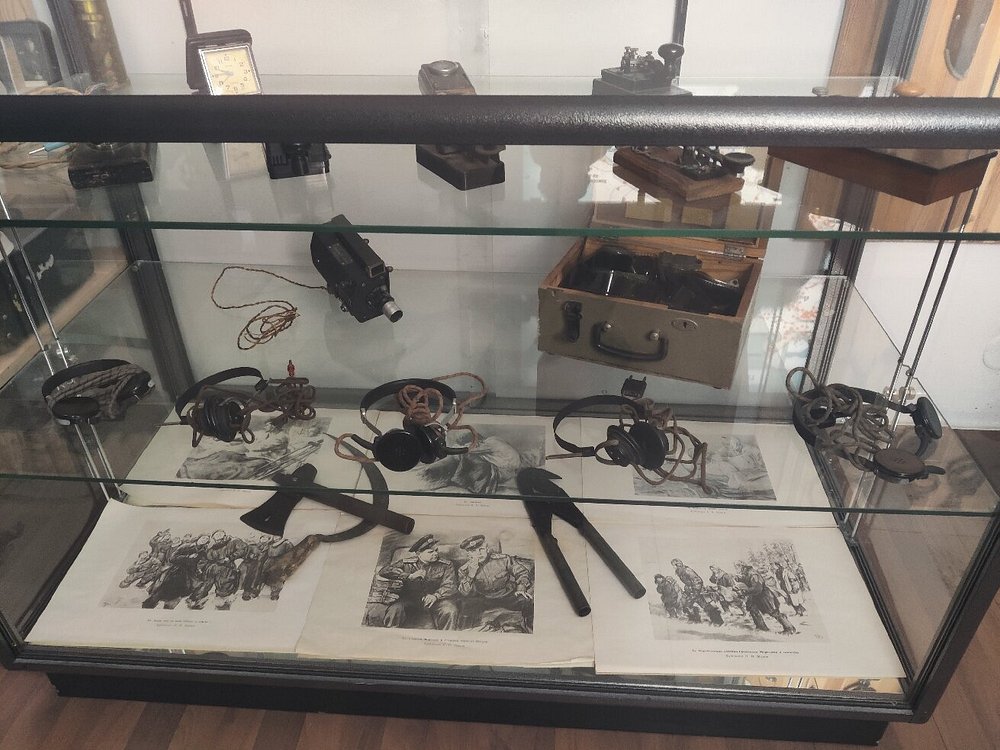
The Museum of Soviet Life is a unique stop in Kazan for those wishing to take a nostalgic journey into the past. This small but captivating museum is filled with hundreds of items reflecting daily life during the Soviet Union era, including posters, toys, clothing, electronic devices, and household objects. Evoking the atmosphere of the 1970s and 1980s, the museum holds emotional significance for visitors who lived through that time, while offering younger generations an engaging way to learn about the lifestyle of the period.
One of the museum’s most remarkable features is its interactive nature: visitors can touch many of the objects, try on Soviet-style clothes for souvenir photos, and even listen to music from the era. Founded by a local entrepreneur, this private museum stands out as a warm, living space far from the traditional exhibition model. Located very close to Bauman Street, the Museum of Soviet Life is a must-visit spot for those seeking a fun and educational experience outside the classic tourist routes in Kazan.
8. Konstantin Vasilyev Museum – An art museum showcasing works by the famous painter.
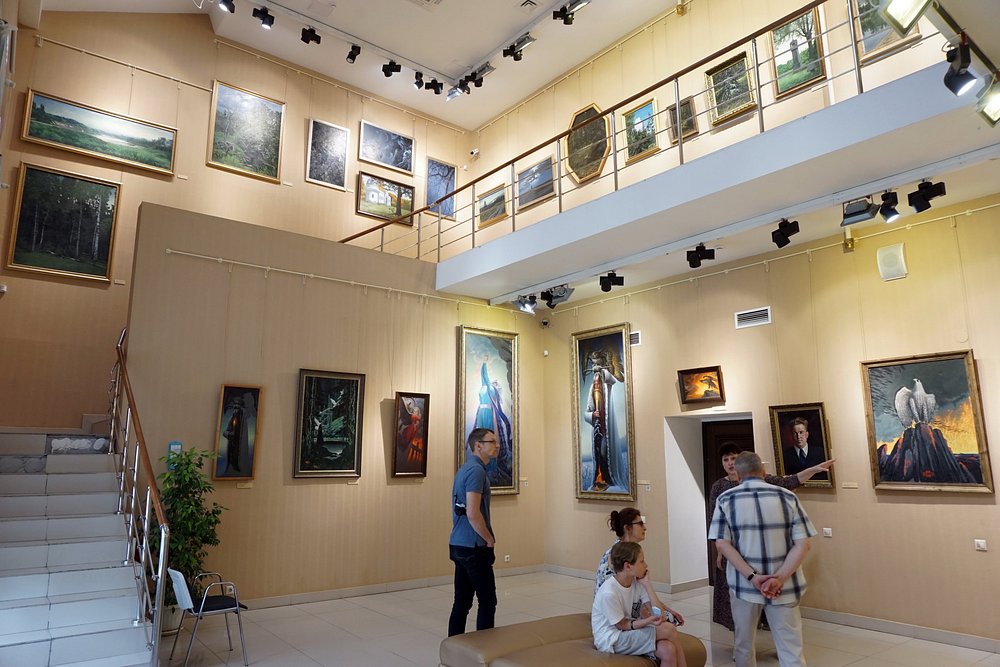
The Konstantin Vasilyev Museum is a private art museum located on Bauman Street, one of Kazan’s busiest avenues, and is dedicated to the works of 20th-century Russian painter Konstantin Vasilyev (1942–1976). Opened in 2013, the museum houses more than 150 of the artist’s paintings, making it the largest Vasilyev collection in Russia. His works, which explore themes such as Slavic and Scandinavian mythology, Russian epics, and World War II, offer visitors both historical and cultural insight.
The museum provides an interactive experience, with guided tours available for those wishing to gain a deeper understanding of Vasilyev’s life and art. There is also a memorial section displaying the artist’s personal belongings. Entrance fees are quite affordable, with discounts available for students and retirees. On the first Tuesday of each month, free admission is offered to certain groups.
The museum is open six days a week from 10:00 AM to 6:00 PM (closed on Mondays). Visitors are encouraged to check the museum’s official social media accounts or contact numbers for up-to-date information on current exhibitions and events.
9. Ushkova House – A historic mansion noted for its elegant architecture.

Ushkova House is a historic mansion located in the center of Kazan, known for its elegant architecture.
It was built in the early 20th century by Alexey Ushkov, a member of a wealthy industrialist family, as a wedding gift for his wife, Zinaida Vysotskaya.
The building was redesigned between 1904 and 1908 by architect Karl Mufke in an eclectic style influenced by Baroque and Imperial elements. Its exterior features plaster decorations, columns, and ornate balconies, making it one of the key examples of Kazan’s architectural heritage.
Inside, the mansion boasts a grand staircase reminiscent of Eastern palaces, walls adorned with gilded dragon figures, and bronze ornaments. One of its most unique features is a grotto designed as a winter garden, built from irregular stones. This area is completed with an aquarium and a fountain visible through large windows, creating a fairytale-like atmosphere. In 1919, the building began serving as the National Library of Tatarstan and was temporarily closed in 2020 due to restoration work.
10. Blue Lakes – A lake region famous for its natural beauty.

Blue Lakes is a stunning lake region located about 20 kilometers north of Kazan and is known as one of the city’s most popular natural getaway spots. These lakes are especially famous for their crystal-clear water and consistently cool temperatures throughout both summer and winter. This unique characteristic comes from the underground springs that feed the lakes. In the summer, it’s a perfect spot for those looking to cool off, while in winter, it attracts brave visitors eager for a plunge into icy waters.
Blue Lakes isn’t just ideal for swimming; it also offers great opportunities for hiking, photography, and birdwatching. The surrounding forested areas provide a peaceful atmosphere, making it an excellent retreat for anyone seeking solitude in nature. Especially on weekends, this natural wonder becomes a favorite destination for both locals and tourists, making it one of the most refreshing and relaxing stops on a Kazan trip.
11. Kazan Family Center (Wedding Palace) – A modern, giant cauldron-shaped building.

The Kazan Family Center (also known as the Wedding Palace) is a modern structure that has become one of the city’s architectural symbols. Built in 2013 along the banks of the Kazanka River, the building is designed in the shape of a “kazan” — a large cooking pot that holds significant cultural value in Tatar tradition. This design also references the meaning of the city’s name, “Kazan.”
At the top of the structure, a 32-meter-high observation deck offers visitors panoramic views of the Kazan Kremlin and the city skyline. At night, the building is illuminated with red lights, creating a striking visual display. In 2016, a sculpture composition titled “On I Ona” (He and She) was added, depicting mythical zilants and leopards from Tatar mythology to symbolize family values.
12. Kazan University – A historic and prestigious university campus.

Kazan Federal University, established in 1804 by decree of Tsar Alexander I, is one of the oldest and most prestigious institutions of higher education in Russia. Founded after the universities in Moscow and St. Petersburg, it has made significant contributions especially in the fields of Oriental studies, mathematics, and chemistry. The period during which renowned mathematician Nikolai Lobachevsky served as rector marked a turning point in the university’s scientific development. Notable figures such as writer Leo Tolstoy and Vladimir Lenin, founder of the Soviet Union, also studied here.
The university’s main campus is located in the city center of Kazan, within walking distance of the Kazan Kremlin. With its neoclassical architecture, the campus offers students a rich academic environment through its historic buildings, modern laboratories, and expansive library. The library holds over 5 million items, including rare manuscripts and early printed works. Additionally, the Universiade Village—originally built for the 2013 Summer Universiade and now home to more than 13,000 students—provides comfortable living spaces and sports facilities.
Kazan Federal University offers over 600 undergraduate and graduate programs across a wide academic spectrum. As of 2023, it hosts more than 52,000 students, including approximately 11,500 international students from 101 countries. The university prioritizes research in fields such as biomedical sciences, materials science, the hydrocarbon industry, new energy sources, and information technology.
With its historical legacy, academic achievements, and diverse international student body, Kazan Federal University holds a respected position both in Russia and globally.
13. Old Tatar Settlement (Staro-Tatarskaya Sloboda) – A historic district reflecting Tatar culture.

The Old Tatar Settlement is one of the areas that best reflects the historical fabric of Kazan and serves as a living museum of Tatar culture. This district was designated primarily for the Tatar population following the Russian conquest of the Kazan Khanate in the 16th century. Traditional Tatar houses with wooden carvings, narrow streets, and colorful façades are among the defining features of the neighborhood. The area has played an important role in preserving Islamic culture and Tatar identity in Kazan.
While walking through the Old Tatar Settlement, visitors will encounter many historic mosques, with Mardzhani Mosque, Apanay Mosque, and Zäynulla Mosque being the most prominent. The neighborhood is also home to shops selling traditional handicrafts, restaurants where one can experience Tatar cuisine, and cultural centers hosting various events. With its quiet atmosphere and distinctive architecture, the Old Tatar Settlement is a must-see, authentic part of Kazan that reflects the city’s multicultural character and centuries-old tradition of tolerance.
14. Tugan Avylym (Tatar Village) – An ethnographic complex showcasing Tatar culture.

Tugan Avylym (Tatar for “My Native Village”) is an ethnographic complex located in the city center of Kazan, offering a modern interpretation of traditional Tatar village life. Opened in 2005 to commemorate the 1000th anniversary of Kazan’s founding, the complex features wooden log houses, flower gardens, and an artificial pond, creating an authentic village atmosphere for visitors. It is an ideal destination for those interested in experiencing various aspects of Tatar culture, including architecture, cuisine, and handicrafts.
Within the complex, visitors can find restaurants serving authentic Tatar dishes, shops offering traditional handmade goods, and playgrounds for children. There are also workshops where guests can learn about Tatar crafts, traditional cooking, and costume design. Every summer, the folkloric show “Kazan” is held, featuring dances and interactive performances that bring Tatar legends to life, offering guests an unforgettable cultural experience. Tugan Avylym is a must-see for those seeking both cultural and entertaining activities in Kazan.
15. Annunciation Cathedral – One of the most important structures of the Orthodox faith.

The Annunciation Cathedral (Blagoveshchensky Cathedral) is an important Orthodox place of worship located in the northeastern part of the Kazan Kremlin and is considered the oldest stone building in the city. Originally built as a wooden church by order of Tsar Ivan IV following the conquest of the Kazan Khanate in 1552, it was later reconstructed in stone between 1561 and 1562 by Pskovian masters Postnik Yakovlev and Ivan Shiryai. It is the only 16th-century church in Russia built with six columns and five apses.
Over time, the cathedral suffered damage from multiple fires and was subjected to major restorations between 1977–1982 and 1996–2005. It was reconsecrated and reopened for worship in 2005 and now functions both as an active place of worship and a historical museum. The interior of the cathedral stands out with its elegant icons and detailed ornamentation, while the basement houses the Annunciation Cathedral History Museum, which is open to visitors. Reflecting Kazan’s multicultural character, this sacred site is a must-see for those looking to explore the city’s historical and architectural heritage.
16. National Museum of Tatarstan – A museum reflecting the region’s history and culture.

The National Museum of the Republic of Tatarstan is one of Kazan’s oldest and most comprehensive museums. Established in 1895 as the Kazan Scientific and Industrial Museum, it has since become the region’s largest cultural treasure. The museum houses over 700,000 artifacts that reflect the historical, ethnographic, and natural heritage of Tatarstan and its surroundings.
The collection includes archaeological finds, traditional Tatar clothing, jewelry, manuscripts, religious icons, and examples of local fauna. Additionally, artistic and cultural objects from various historical periods of Tatarstan are displayed. The museum offers visitors a valuable opportunity to explore the region’s rich history and cultural diversity.
Located directly opposite the main entrance of the Kazan Kremlin, the museum is housed in an ornate 18th-century building. Visiting hours are generally from 10:00 AM to 6:00 PM, and the museum is closed on Mondays. On the first Wednesday of each month, certain groups are granted free admission.
The National Museum of Tatarstan is a must-visit destination for anyone seeking a cultural journey in Kazan.
17. Kazan Riviera – A resort complex famous for its amusement parks and beaches.

Kazan Riviera is a modern holiday complex located on the banks of the Kazanka River and stands out as one of the city’s largest entertainment centers. Its most prominent feature, the Riviera Aquapark, is one of the largest indoor water parks in Europe and operates year-round. It includes more than 50 water slides, wave pools, thermal spa areas, and special play zones for children.
Another key part of the complex is the Riviera Beach, which serves visitors during the summer with outdoor swimming pools, sunbathing areas, and beach volleyball courts. The Riviera Hotel, located within the complex, is a striking 26-story modern building that offers panoramic views of the city. The hotel is equipped with numerous amenities, including access to the water park, a spa center, cinema halls, a nightclub, and a fitness center.
Kazan Riviera is a comprehensive resort offering both relaxation and entertainment for families, couples, and groups of friends. As visiting hours and entrance fees may vary by season, it is recommended to check the official website before planning your visit.
18. Kazan Millennium Park – A large green space located in the city center.

Millennium Park is a large green space located in the city center of Kazan, along the shores of Lake Kaban. It was built in 2005 to commemorate the 1000th anniversary of the city’s founding. The park is adorned with elements that reflect the city’s historical and cultural heritage and serves as a place for both locals and tourists to relax and enjoy leisure activities.
At the park’s entrance, visitors are greeted by statues of Zilant, the winged serpent symbol of Kazan. At its center stands a large fountain designed in the shape of a kazan (cauldron), a significant symbol in Tatar culture. This fountain is a popular spot for couples who toss coins into it as a symbol of wishing for happiness in marriage.
The park’s walking paths are lined with various types of trees, some of which were planted by notable local figures. Additionally, a monument to the famous Bulgarian poet Kul Gali is located within the park.
Millennium Park hosts various events throughout the year. In the summer, it features concerts and festivals, while in the winter, it transforms with Christmas trees and decorative lights, offering a festive atmosphere.
For visitors to Kazan, Millennium Park is an ideal destination to experience both the city’s cultural fabric and natural beauty.
19. Freedom Square (Svoboda Square) – A square where major city events are held.

Freedom Square (Russian: Ploshchad Svobody) is a central square in Kazan and holds significant political and cultural importance. As the seat of the Government of the Republic of Tatarstan, the square is surrounded by state buildings and monuments, forming the administrative heart of the city. One of its most notable features is the statue of Vladimir Lenin, a prominent symbol that reflects the legacy of the Soviet era.
Freedom Square hosts various events throughout the year. Official ceremonies, celebrations, and open-air concerts attract the interest of both locals and tourists. Its spacious layout and central location make it one of the focal points of social and cultural life in Kazan. Visitors can experience both the city’s historical atmosphere and enjoy contemporary public events in the same space.
20. Lake Kaban – A natural lake located in the city center.

Lake Kaban is a natural water system located in the center of Kazan and is the largest lake in Tatarstan. Covering a total area of 1.86 km², the lake is divided into three main sections: Lower (Nizhny), Middle (Sredny), and Upper (Verkhny) Kaban Lakes. It connects to the Kazanka River via the Bolak Canal, a link that plays an important role in maintaining the lake’s ecological balance.
In recent years, particularly around Lower Kaban Lake, extensive shoreline redevelopment and landscaping projects have been carried out. As a result, the lakeside area is now equipped with walking paths, cycling routes, seating areas, and modern lighting. Cultural landmarks such as the Galiaskar Kamal Tatar State Academic Theatre located on the lake’s edge add artistic value to the area. Lake Kaban is a must-visit destination in Kazan for both nature lovers and those interested in cultural activities.
21. Gorky Park – A recreational and entertainment area ideal for families.
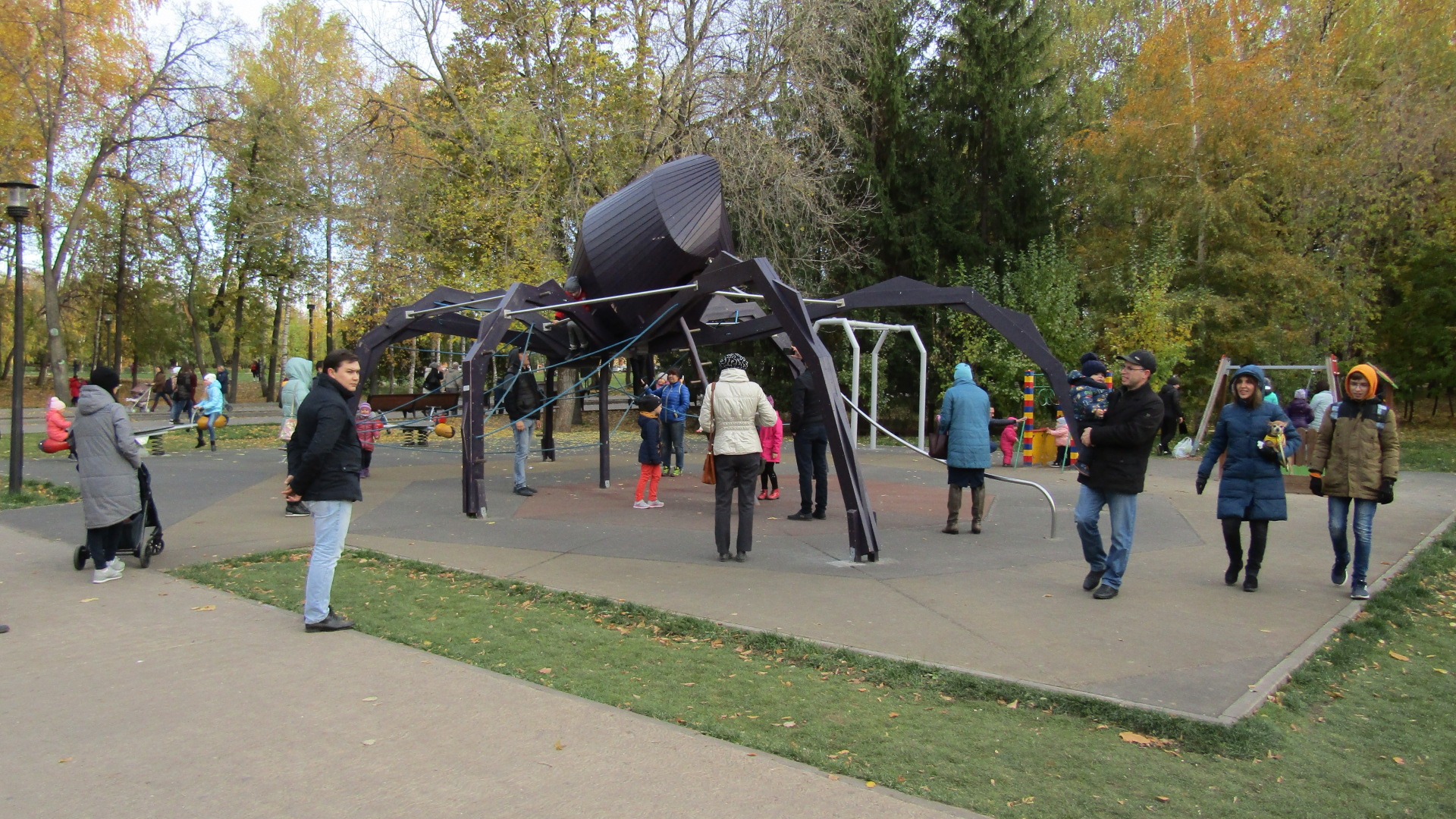
Gorky Park (Gorky Central Park of Culture and Leisure) is a spacious green area located in the center of Kazan, offering a pleasant environment for both locals and tourists.
Established in the 19th century, the park has been modernized over time and today serves as an ideal place for sports, relaxation, and cultural activities.
It features walking and cycling paths, children’s playgrounds, an open-air cinema, and various sports courts.
Gorky Park is particularly appealing to families. Fountains and playgrounds designed for children allow them to enjoy a safe and fun experience. Additionally, open-air concerts, festivals, and cultural events held in the park offer visitors a range of activities. Cafés and rest areas surrounding the park provide comfortable spaces for relaxation.
22. Kazan Zoo and Botanical Garden – An ideal spot for nature and animal lovers.

The Kazan Zoo and Botanical Garden (Kazan Zoological and Botanical Garden) was founded in 1806 by Karl Fuchs as part of Kazan University, making it one of the oldest zoos in Russia and Europe. Initially established as a botanical garden for medicinal plants, the area was expanded in 1931 with the addition of a zoo. Today, it is home to over 160 species of animals and more than 5,000 plant specimens. The zoo became a member of the European Association of Zoos and Aquaria (EAZA) in 1996.
The garden features modern areas, such as the African-themed “Zambezi River” section, where animals like lions, zebras, gorillas, and hippos are displayed in environments similar to their natural habitats. The zoo also offers family-friendly activities, including play areas for children, climbing walls, and birthday events.
Located at 112 Khadi Taktash Street, the garden is generally open for visits from 08:30 AM to 7:00 PM. For up-to-date information on visiting hours and events, you can visit its official website at kazzoobotsad.ru.
23. Kazan Arena – A modern football stadium and event venue.

Kazan Arena, renamed Ak Bars Arena in 2019, is one of Kazan’s most modern and versatile stadiums. Built in 2013 for the 2013 Summer Universiade, the stadium has a seating capacity of 45,379, making it the largest sports facility in Tatarstan. It has also hosted international events such as the 2018 FIFA World Cup and the 2017 FIFA Confederations Cup.
The stadium’s architecture was designed by the renowned Populous firm, and it features one of the world’s largest exterior LED screens. This screen is used for various events and advertisements. In addition to football matches, the stadium is also used for concerts, cultural events, and other sporting competitions. Currently, no scheduled events are planned.
Beyond being a sports facility, Kazan Arena plays a significant role in Kazan’s cultural and social life. With its modern amenities and versatile spaces, it offers visitors unforgettable experiences.
24. Sviyazhsk Island – A historic island listed as a UNESCO World Heritage site.

Sviyazhsk Island is a historic island settlement located about 30 km west of Kazan, at the confluence of the Volga, Sviyaga, and Shchuka rivers in Tatarstan. Founded in 1551 by Tsar Ivan IV (Ivan the Terrible) as a strategic base against the Kazan Khanate, the construction of the settlement is notable for the fact that pre-made wooden structures from Uglich were transported across the Volga River and assembled within just four weeks. This rapid construction process highlights the island’s military and religious significance.
The island’s most important structure, the Uspenskiy Cathedral and Monastery (The Assumption of the Virgin Mary), was added to the UNESCO World Heritage List in 2017. This complex is famous for its 16th-century Russian Orthodox frescoes, including the unique depiction of Saint Christopher with a horse’s head, which is an exceptional example in Orthodox iconography.
Throughout its history, Sviyazhsk Island has played various roles. During the Soviet period, it served as a prison and mental asylum, but in the 2000s, restoration efforts turned it into a popular tourist destination. The island is home to 37 cultural monuments, including the 16th-century Ioanno-Predtechensky Monastery and seven churches.
Sviyazhsk Island is accessible from Kazan by road or by boat tours during the summer months. The island offers visitors a unique experience with its historic atmosphere, architecture, and natural beauty.
25. Bolgar Archaeological Site – One of the important historical centers of the Islamic world.

Bolgar Archaeological Site is a historic settlement located in the Spassky District of the Republic of Tatarstan, about 140 km south of Kazan, on the left bank of the Volga River. From the 7th to the 15th centuries, this ancient city served as the capital of the Volga Bulgars. Particularly in 922, when the Volga Bulgars embraced Islam, Bolgar became an important center in the Islamic world. This event played a crucial role in the spread of Islam to northern Eurasia.
Listed as a UNESCO World Heritage site in 2014, Bolgar is renowned for its rich historical and architectural heritage. Among the ancient city’s structures are the Great and Small Minarets, the Ulu Mosque, the Khan Mausoleum, and the Eastern and Northern Mausoleums. Additionally, modern structures such as the Bolgar Civilization Museum, the Quran Museum, and the White Mosque are open to visitors. The White Mosque stands out for its elegant architecture, while the Quran Museum displays the world’s largest printed copy of the Quran.
Bolgar is not only known for its historical buildings but also for its cultural events. Annual events like the “Great Bolgar Medieval Warfare Festival” allow visitors to experience the historical atmosphere firsthand. Moreover, institutions like the Bolgar Islamic Academy reinforce the region’s religious and cultural significance.
Bolgar Archaeological Site is a must-visit destination for history enthusiasts and cultural travelers, offering a unique insight into Turkish-Islamic history, architectural richness, and cultural heritage.
26. Kazan Planetarium – Interactive shows for astronomy enthusiasts.
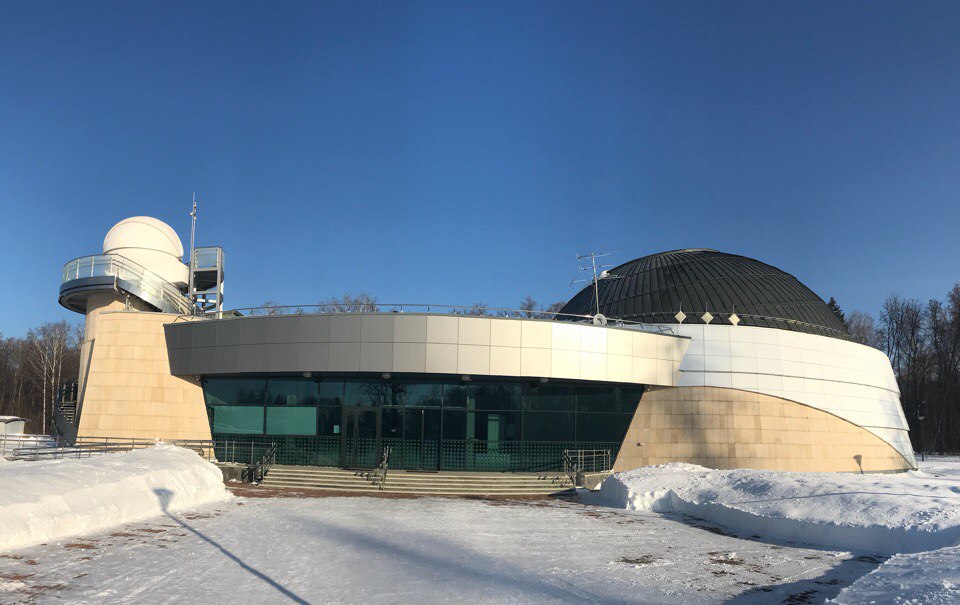
Kazan Planetarium, located within the Engelhardt Astronomical Observatory of Kazan Federal University, opened in 2013. It is one of Russia’s most advanced digital planetariums, featuring a 15-meter-diameter inclined dome and a seating capacity of 90. Equipped with the MEGASTAR-IIA optical projector and a 4K full-dome digital projection system, it offers impressive visual presentations about stars, planets, and galaxies.
The planetarium provides interactive and educational shows on astronomy and space science for both children and adults. It is also part of an astropark that includes an observatory, astronomy museum, and science center. This complex offers visitors the opportunity to explore the sky and learn the secrets of the universe.
For those interested in visiting the Kazan Planetarium, the official website is: planetarium-kazan.ru. You can find up-to-date information on visiting hours and event schedules on this site.
27. Kazan Water Park – Fun water activities for families and children.

Kazan Water Park is one of the most popular water amusement centers in the city, offering a variety of activities for both families and children. The park features water slides, wave pools, and play areas designed for different age groups. In addition, there are relaxation areas and cafés for visitors to enjoy.
Visiting hours and entrance fees may vary depending on the season, so it is recommended to check the official website before planning your visit.
28. Kazan Circus – A venue showcasing traditional Russian circus performances.
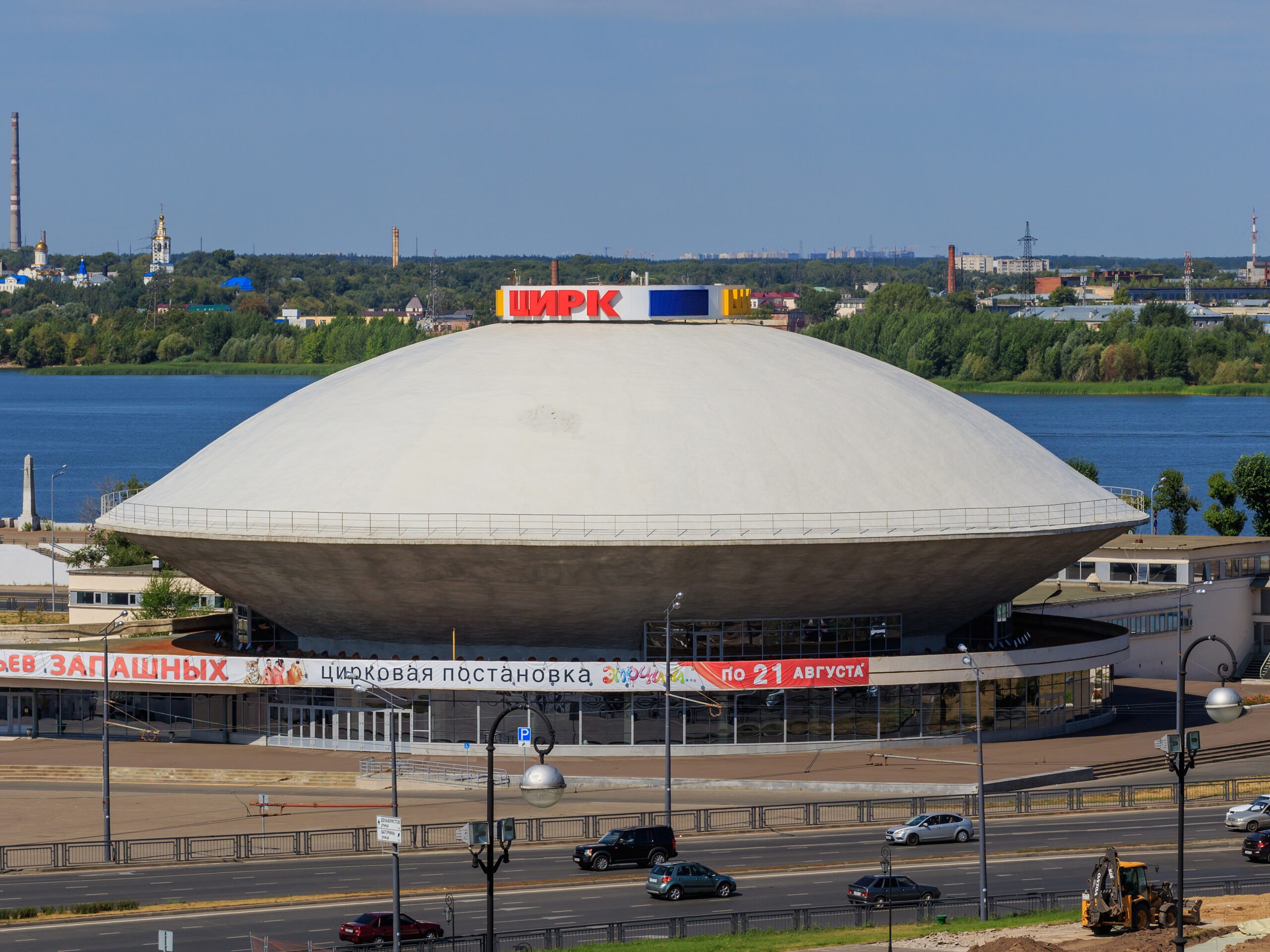
Kazan Circus (Kazan State Circus) is one of the key representatives of traditional Russian circus art in Tatarstan’s capital, Kazan. Originally built in 1890 by the Nikitin brothers as a wooden structure, the circus gained state status in 1924. The current circus building, opened in 1967, was designed by architect G. M. Pichueva and engineers O. I. Berim and E. Yu. Brudno. This structure is notable for its unique architecture, featuring a conical concrete shell without internal support columns and a design reminiscent of a “flying saucer.”
Kazan Circus hosts a variety of performances featuring both local and international artists. In the summer of 2025, a new national program titled “Heritage,” focusing on Tatarstan’s traditions and legends, is planned to be launched. This performance, with the participation of Kazan and invited artists, will feature elaborate sets, costumes, and technical equipment, all of which are currently under development. Since 1996, the circus school has been providing training for young talents in acrobatics, juggling, and stage arts.
Kazan Circus is located at Millennium Square, No. 2, and you can find ticket and program information on the official website kazan-circus.ru.
29. Kazan State Opera and Ballet Theater – An important cultural center for art lovers.

The Musa Jalil Tatar Academic Opera and Ballet Theater is one of the most prestigious cultural centers in Kazan and Tatarstan, located in the heart of the city’s cultural life. Built in 1851, this historic building is designed according to the principles of Tatar national classicism, featuring an impressive architecture with elegant columns and sculptures. Between 2003 and 2005, extensive restoration and modernization efforts expanded the theater’s total area from 11,000 m² to 17,700 m², upgrading stage equipment and acoustic systems to meet contemporary technological standards.
The theater is named after Musa Jalil, a Tatar poet renowned for his heroism during World War II. Its rich repertoire includes classic Russian and world operas, ballets, and works specific to Tatar culture. The theater hosts annual international opera and ballet festivals, bringing together art lovers and offering an unforgettable cultural experience for visitors to Kazan.
30. Kazan Modern Art Gallery – A gallery showcasing contemporary art works.

The Kazan Modern Art Gallery, operating under the Tatarstan Republic State Museum of Fine Arts, is one of the most important centers for contemporary art in Kazan. Located at 57 Karl Marx Street, the gallery features a spacious three-story exhibition area and hosts works by both local and international artists. The gallery displays a wide range of works from various disciplines, including painting, sculpture, graphic art, and multimedia, offering visitors a rich visual experience.
Regular events such as artist talks, film screenings, children’s workshops, and art education programs are held at the gallery. These activities attract the interest of both art enthusiasts and families, making the gallery a dynamic cultural hub. The gallery is typically open from Tuesday to Sunday, from 11:00 AM to 8:00 PM. For information on current exhibitions and events, you can visit visit-tatarstan.com.
